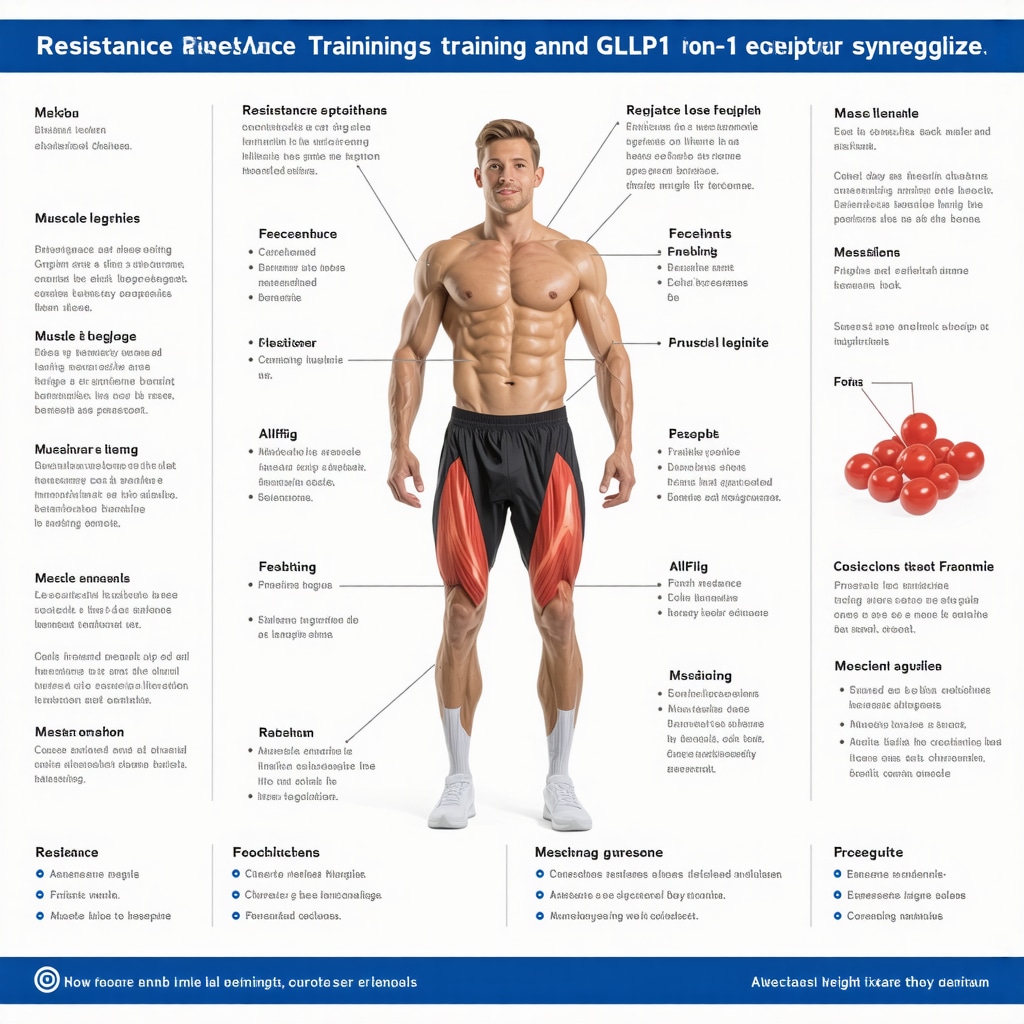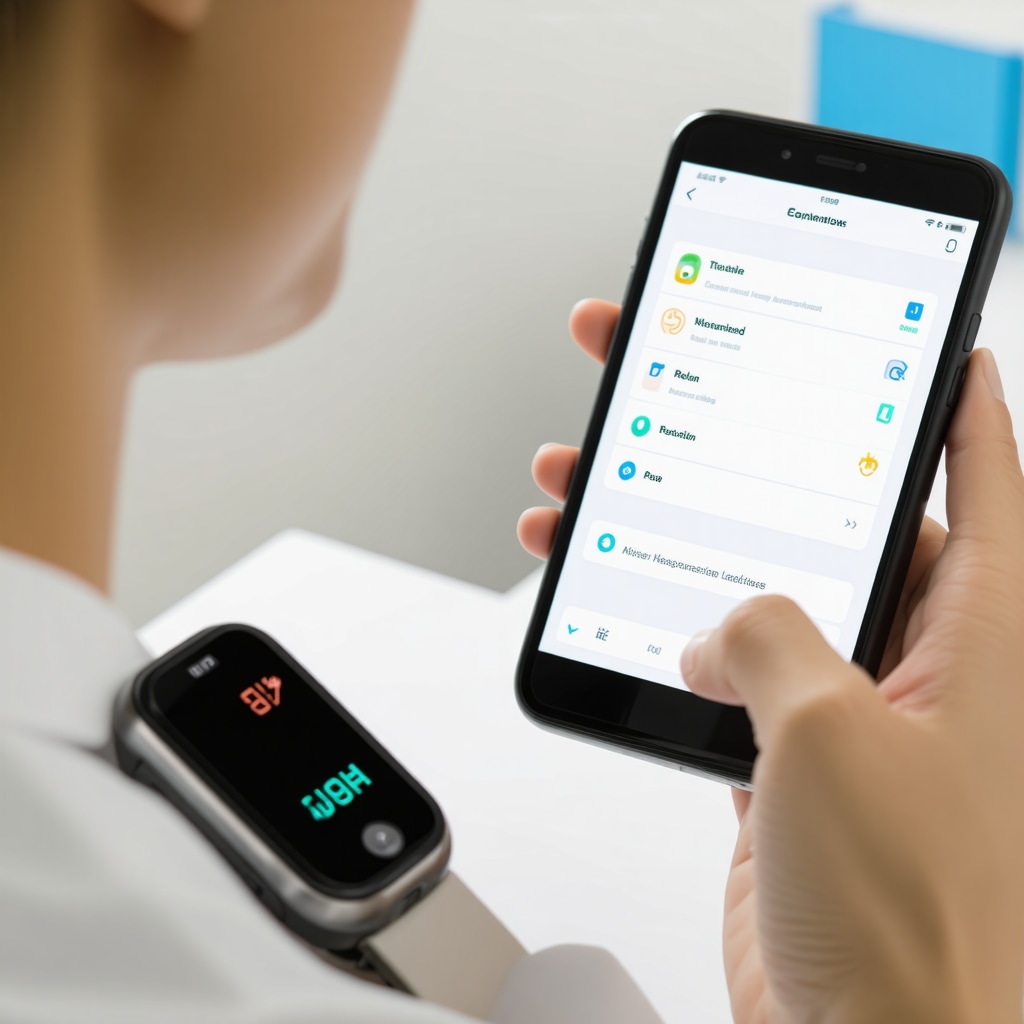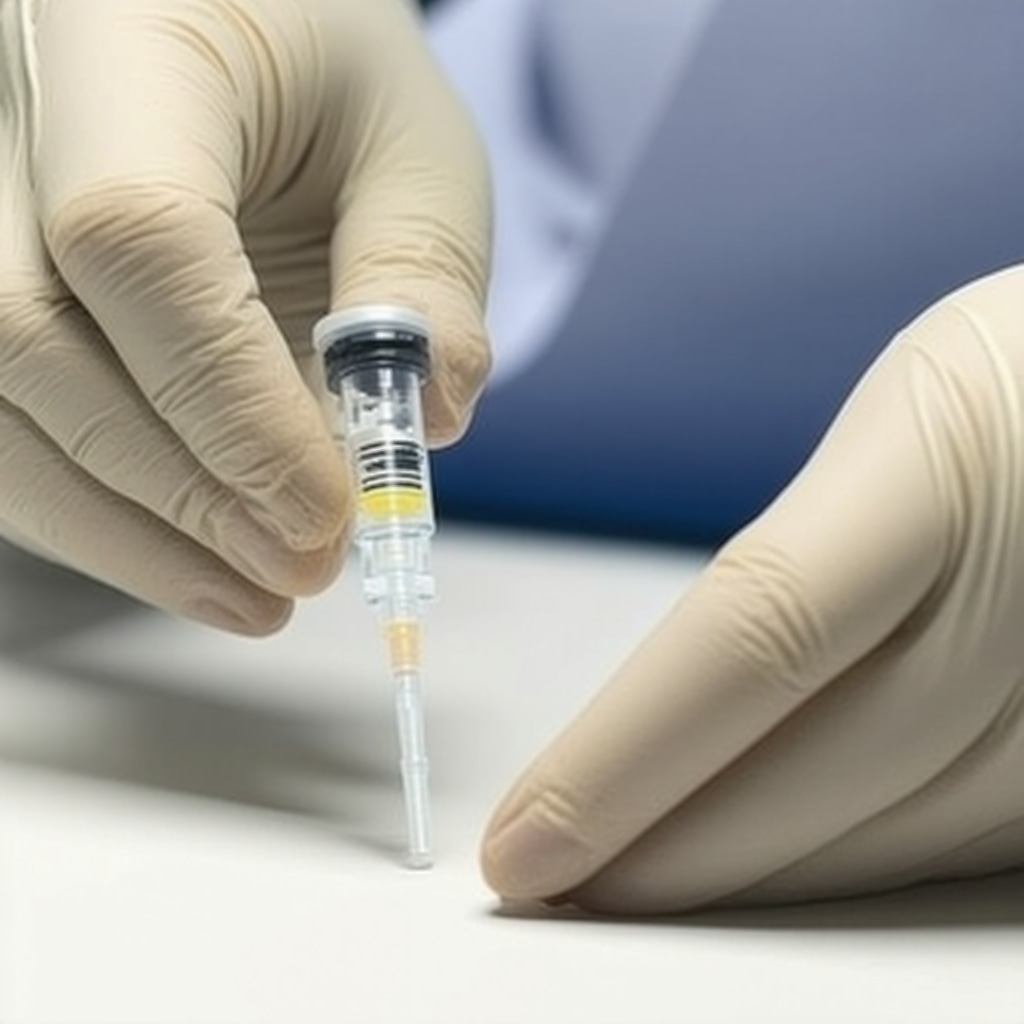Mastering the Art of Prescription Injection Weight Loss: Preparation Is Key
Embarking on a weight loss journey with prescription injections like semaglutide or tirzepatide is a transformative step that requires precise preparation and understanding. These injectable medications have revolutionized obesity management by helping regulate appetite and improve metabolic health. However, the effectiveness and safety of your shots hinge on how well you prepare both mentally and physically before each injection.
Insightful Practices for Preparing Your Weight Loss Shots
Preparation goes beyond just drawing medication into a syringe. It encompasses selecting the right environment, ensuring sterile technique, and understanding your medication’s storage and handling requirements. Begin by choosing a clean, well-lit space free from distractions to minimize errors. Always wash your hands thoroughly and use alcohol swabs to clean the injection site and the vial’s rubber stopper to maintain sterility, which is crucial to prevent infections.
Choosing the Right Needle and Injection Site: Why It Matters
The needle size and injection site directly influence comfort and absorption efficiency. Generally, a short, thin needle (such as a 4mm or 5mm) is recommended for subcutaneous injections used in weight loss therapies. Common injection sites include the abdomen, upper thighs, and the back of the arms. Rotating these sites systematically, as explained in this detailed guide, minimizes tissue damage and enhances medication efficacy.
Temperature and Storage: Protecting Your Medication’s Integrity
Maintaining the medication at the correct temperature is paramount. Most GLP-1 receptor agonists require refrigeration between 2°C and 8°C but should be brought to room temperature before injection to reduce discomfort. Improper storage can degrade the medication, reducing its effectiveness and potentially causing adverse reactions. For comprehensive storage recommendations, see best storage practices for your medication.
How Can I Minimize Injection Anxiety and Discomfort?
Injection anxiety is common but manageable with proper techniques. Using distraction methods like deep breathing, applying a numbing cream, or injecting after a warm shower to increase blood flow can alleviate pain. Expert advice on managing injection site discomfort and anxiety is available here. Consistent practice and preparation help build confidence, making the routine less daunting over time.
Incorporating Expert Medical Guidance to Optimize Your Injection Routine
Integrating clinically-backed strategies ensures your weight loss injections are as effective and safe as possible. Regular consultation with healthcare providers allows personalized adjustments and monitoring for side effects. For a detailed approach to medical supervision and injection balance, explore medically supervised weight loss balancing injections with lifestyle changes.
Interested in deepening your knowledge on how to prepare and optimize your prescription injection weight loss shots? Share your experiences or questions below to join a community focused on safe and effective weight management.
For authoritative insights on the science behind these medications, visit the National Center for Biotechnology Information’s review on GLP-1 receptor agonists, which provides comprehensive data on their mechanisms and clinical applications.
When Setbacks Strike: Learning to Adjust and Persist
Over the months of using semaglutide, I encountered moments where my progress plateaued or side effects crept in unexpectedly. It was frustrating at times, as if my body was resisting the changes I was trying to achieve. However, I realized that setbacks were part of this journey, not signs of failure. By staying in close touch with my healthcare provider, I could tweak my dosage, adjust my meal plans, and modify injection timing to better suit my body’s responses. This collaboration made a significant difference, highlighting the importance of medically supervised weight loss and personalized adjustments.
For anyone facing similar hurdles, remember that flexibility is key. Your body is unique, and what works initially might need refinement over time. Resources like customizing your injectable plan right offer practical tips on making these necessary changes safely and effectively.
Balancing Lifestyle Changes with Your Injection Routine
One of my biggest takeaways was understanding that injections alone don’t guarantee weight loss success. Incorporating sustainable lifestyle changes—such as mindful eating, consistent exercise, and stress management—has been crucial. For example, I started blending short walks into my daily routine and paying closer attention to my body’s hunger cues. I found that these small but consistent actions amplified the benefits of my weekly injections.
If you’re curious about how to effectively combine injections with lifestyle habits, check out this weekly injection weight loss guide for combining diet and medication, which offers science-backed strategies to maximize your results.
How Do You Maintain Motivation When Progress Feels Slow?
Motivation can ebb and flow, especially when weight loss is gradual. I found that setting small, achievable goals and celebrating non-scale victories—like improved energy or better sleep—helped me stay on track. Sharing my journey with supportive friends and online communities also provided encouragement during tougher days.
Have you experienced moments when your motivation dipped? What strategies helped you push through? I’d love to hear your stories and tips in the comments below. Sharing our experiences not only empowers us but also builds a community where we can learn and grow together.
According to a review published by the National Center for Biotechnology Information, combining pharmacotherapy with behavioral interventions significantly enhances weight loss outcomes and adherence over time (source), which aligns with my personal experience.
Decoding the Complex Physiology Behind Weight Loss Plateaus With Injectable Therapies
Weight loss plateaus during treatment with injections like semaglutide or tirzepatide can be perplexing, often leading to discouragement. However, these stalls are frequently rooted in the body’s intricate physiological adaptations. As fat mass decreases, basal metabolic rate (BMR) typically slows, reducing caloric expenditure. Additionally, hormonal shifts—such as alterations in leptin and ghrelin levels—can heighten hunger and reduce satiety, counteracting the pharmacological effects of GLP-1 receptor agonists. Understanding these mechanisms is pivotal for tailoring interventions that circumvent or mitigate plateaus.
Innovative Tactics for Breaking Through Weight Loss Plateaus: Beyond Dosage Adjustments
While dosage titration under medical supervision is a first-line response to plateauing, more nuanced strategies exist. Incorporating intermittent fasting protocols or adjusting macronutrient composition to favor higher protein intake can synergize with injectable therapies by enhancing satiety and preserving lean muscle mass. Moreover, integrating resistance training stimulates muscle hypertrophy, counteracting metabolic slowdown. These adjustments must be personalized and monitored closely to ensure safety and efficacy.
What Are the Mechanistic Benefits of Combining Resistance Training With GLP-1 Agonist Injections?
Resistance training induces muscle protein synthesis and improves insulin sensitivity, which complements the glucose-regulating effects of GLP-1 receptor agonists. Increased muscle mass elevates resting metabolic rate, enabling higher caloric burn even at rest—an essential factor in overcoming metabolic adaptation. Additionally, resistance exercise promotes release of myokines, which have anti-inflammatory properties potentially enhancing metabolic health. This multifaceted synergy underscores why combining pharmacotherapy with targeted exercise yields superior outcomes compared to either modality alone.
Leveraging Continuous Glucose Monitoring (CGM) for Personalized Injection Timing and Dietary Choices
Recent advances in technology allow patients on prescription weight loss injections to harness continuous glucose monitoring devices to fine-tune their injection timing and nutritional intake. CGM data reveal individual glycemic responses to different foods and activities, enabling adjustments that optimize medication efficacy and minimize side effects like hypoglycemia or gastrointestinal discomfort. Utilizing CGM fosters a data-driven approach, empowering patients to make informed decisions and enhance adherence.
Addressing the Psychological Dimensions: Cognitive Behavioral Techniques to Support Injection Adherence
Beyond physiological and technical factors, psychological resilience significantly influences long-term success with injectable weight loss treatments. Cognitive Behavioral Therapy (CBT) tailored to weight management can help patients reframe negative thoughts about setbacks and develop coping strategies for cravings or injection-related anxiety. Integrating psychological support into treatment plans improves adherence rates and overall quality of life.
For a comprehensive exploration of these advanced strategies, consult the National Institute of Diabetes and Digestive and Kidney Diseases review on metabolic adaptations to weight loss, which provides in-depth scientific insights into the challenges and solutions in obesity pharmacotherapy.
Curious about optimizing your weight loss injection journey with cutting-edge techniques and personalized interventions? Engage with our expert community by sharing your questions or experiences below—let’s deepen our collective understanding and success together.

Harnessing Cutting-Edge Insights to Elevate Your Weight Loss Injection Protocol
Building upon foundational injection techniques, leveraging advanced strategies can significantly enhance therapeutic outcomes with prescription weight loss injections. These approaches integrate nuanced physiological understanding, personalized technology, and psychological support to refine treatment beyond conventional paradigms.
Synergizing Pharmacotherapy with Metabolic Flexibility Techniques
Introducing metabolic flexibility practices such as controlled intermittent fasting or time-restricted feeding can optimize the pharmacodynamics of GLP-1 receptor agonists. By strategically aligning nutrient intake windows with injection timing, patients may experience amplified appetite suppression and improved insulin sensitivity. Clinical evidence suggests that this synchronization minimizes postprandial glycemic excursions, thereby enhancing drug efficacy.
What Are the Optimal Timing and Nutritional Strategies to Maximize Semaglutide or Tirzepatide Efficacy?
Expert consensus indicates that administering injections prior to the largest meal of the day, coupled with a macronutrient composition favoring high protein and moderate healthy fats, can potentiate satiety and metabolic benefits. Additionally, spacing meals to reduce glycemic variability complements the medication’s glucose-lowering actions. However, personalization is crucial; continuous glucose monitoring (CGM) data allow customization of injection schedules and dietary plans to individual glycemic responses, fostering superior outcomes.
Integrating Wearable Technology for Real-Time Feedback and Precision Health
Wearable devices equipped with CGM and activity tracking provide invaluable real-time insights, enabling dynamic adjustment of injection timing and lifestyle interventions. This data-driven methodology facilitates proactive management of adverse reactions and metabolic fluctuations, empowering patients to fine-tune their regimen responsively. According to a study published by the Journal of Diabetes Science and Technology, leveraging continuous glucose data markedly improves adherence and therapeutic success in injectable obesity treatments.
Psychological Resilience: A Pillar for Sustained Injection Adherence
The psychological component of adherence to injectable therapies is often underestimated. Cognitive Behavioral Therapy (CBT) tailored for weight management addresses maladaptive thought patterns and injection-related anxieties, fostering resilience. Incorporating mindfulness-based stress reduction further supports emotional regulation, mitigating behavioral barriers to consistent injection practice.
Advanced Injection Site Management: Micro-Needling and Scar Tissue Mitigation
Repeated injections can lead to lipohypertrophy or scar tissue formation, impairing drug absorption. Emerging techniques like micro-needling prior to injection have shown promise in enhancing local blood flow and promoting tissue remodeling. Expert practitioners emphasize meticulous site rotation protocols combined with periodic ultrasound assessment to monitor tissue integrity and optimize pharmacokinetics.
Expanding the Horizon: Pharmacogenomics and Personalized Medicine in Injection Weight Loss Therapy
Pharmacogenomic profiling is an emerging frontier that may soon enable clinicians to predict individual responses to GLP-1 receptor agonists and tailor dosing regimens accordingly. Understanding genetic variants affecting drug metabolism and receptor sensitivity could revolutionize personalized treatment, minimizing adverse effects while maximizing efficacy.
To explore these cutting-edge developments in depth, the Journal of Diabetes Science and Technology review on personalized medicine and injectable therapies offers a comprehensive resource grounded in rigorous clinical research.
Ready to transcend conventional weight loss injection protocols and integrate advanced, evidence-based strategies? Engage with our expert community by sharing your experiences or inquiries below—empower your journey with precision and innovation.

Frequently Asked Questions (FAQ)
What are the best practices for preparing prescription weight loss injections to ensure safety and effectiveness?
Preparation involves selecting a clean, well-lit environment, proper handwashing, and using sterile technique such as cleaning the injection site and vial stopper with alcohol swabs. Correct needle selection and rotation of injection sites are essential to minimize tissue damage and optimize absorption. Proper medication storage, typically refrigeration between 2°C and 8°C, followed by warming to room temperature before injection, preserves drug integrity and minimizes discomfort.
How can I minimize injection-related anxiety and pain during my weight loss treatment?
Techniques include deep breathing exercises, applying numbing creams, injecting after a warm shower to increase local blood flow, and gradually building familiarity through consistent practice. Psychological support such as Cognitive Behavioral Therapy (CBT) can also address injection anxiety, improving adherence and overall treatment experience.
Why do weight loss plateaus occur with injectable therapies like semaglutide or tirzepatide?
Plateaus stem from physiological adaptations including slowed basal metabolic rate due to fat loss, hormonal changes affecting hunger and satiety (e.g., leptin and ghrelin fluctuations), and the body’s metabolic compensation mechanisms. These complex responses can diminish the apparent effectiveness of injections over time.
What strategies beyond dosage adjustments can help break through weight loss plateaus?
Incorporating intermittent fasting or time-restricted feeding, optimizing macronutrient balance with higher protein intake, and engaging in resistance training to preserve muscle mass can counter metabolic slowdown. Personalized adjustments monitored by healthcare providers are key to safely implementing these interventions alongside injections.
How does combining resistance training with GLP-1 receptor agonist injections benefit weight loss?
Resistance training enhances muscle protein synthesis and insulin sensitivity, increasing resting metabolic rate and aiding in overcoming metabolic adaptation. It also promotes anti-inflammatory myokine release, synergizing with pharmacotherapy to improve metabolic health and weight loss outcomes.
Can continuous glucose monitoring (CGM) improve injection timing and dietary choices?
Yes, CGM provides real-time data on glycemic responses to foods and activities, enabling personalized adjustment of injection schedules and meal planning. This data-driven approach helps optimize medication efficacy, reduce side effects, and enhance adherence.
What role does psychological resilience play in maintaining injection adherence?
Psychological factors significantly impact long-term adherence. CBT and mindfulness techniques help reframe negative thoughts, manage cravings, and reduce injection-related anxieties, thereby supporting consistent use and improving quality of life.
How can advanced techniques like micro-needling improve injection site management?
Micro-needling before injections can enhance local blood flow and promote tissue remodeling, reducing lipohypertrophy and scar tissue that impair drug absorption. Combined with systematic site rotation and periodic ultrasound assessment, these practices optimize pharmacokinetics and comfort.
What is the future of personalized medicine in injectable weight loss therapy?
Pharmacogenomic profiling is emerging as a tool to predict individual responses to GLP-1 receptor agonists. Tailoring dosing and treatment plans based on genetic variants may minimize adverse effects and maximize efficacy, representing a major advance in obesity pharmacotherapy.
How important is it to integrate lifestyle changes with prescription injection therapy?
Injections alone are insufficient; sustainable lifestyle changes including mindful eating, regular physical activity, and stress management amplify and sustain weight loss benefits. Behavioral interventions combined with pharmacotherapy significantly improve outcomes.
Trusted External Sources
- National Center for Biotechnology Information (NCBI) — GLP-1 Receptor Agonists Review: Offers comprehensive scientific data on mechanisms, efficacy, and safety profiles of injectable weight loss medications, supporting evidence-based practice.
- National Institute of Diabetes and Digestive and Kidney Diseases (NIDDK): Provides in-depth reviews on metabolic adaptations to weight loss and obesity pharmacotherapy, informing understanding of physiological challenges and solutions.
- Journal of Diabetes Science and Technology: Publishes research on continuous glucose monitoring and advanced technologies that enhance personalized treatment and adherence in injectable obesity therapies.
- Endocrine Society Clinical Practice Guidelines: Authoritative guidelines on obesity management including pharmacotherapy and lifestyle modification strategies, ensuring treatment aligns with best clinical practices.
- American Society for Metabolic and Bariatric Surgery (ASMBS): Provides expert consensus and resources on integrating surgical and non-surgical weight loss interventions, relevant for comprehensive obesity management planning.
Conclusion
Mastering prescription injection weight loss requires a multifaceted approach that blends meticulous preparation, physiological insight, personalized lifestyle integration, and psychological support. Understanding the science behind medication action and metabolic adaptations empowers patients to navigate plateaus and optimize outcomes. Leveraging technologies like continuous glucose monitoring and emerging fields such as pharmacogenomics further refines treatment precision. Above all, sustained success hinges on collaboration with healthcare professionals and adopting evidence-based strategies tailored to individual needs. Embrace these advanced concepts to enhance your weight loss journey with injections and share your experiences to foster a knowledgeable, supportive community.
If you found this guide valuable, consider sharing it with others, leaving your questions or insights in the comments, and exploring related expert content to deepen your understanding and success in prescription injection weight loss.

